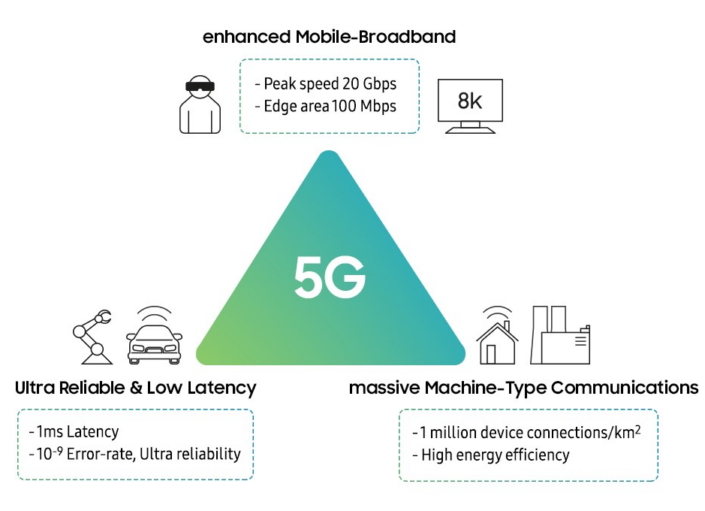FWA is a Big Hit. What’s Next for 5G mmWave?
By Mersad Cavcic, VP of Product Management

Remember the 2018-era 5G use-case triangle showing enhanced Mobile Broadband (eMBB), massive Machine-Type Communications (MTC) and Ultra Reliable and Low Latency Connections (URLLC)? Where was Fixed Wireless Access (FWA)? Now, FWA is getting the attention it deserves. The change came in March 2022 when FWA subscriber gains were large enough to make Cable admit that the service was having an impact on its business.
Arguably, FWA is financing 5G, at least for the moment. MTC and URLLC are still developing, and consumers aren’t ready to pay an enhanced premium for eMBB. Let’s give credit to Nokia and Parks Associates for their 2020 research showing that “76% of respondents regard FWA as the most appealing [5G] use case overall, with 66% saying they would subscribe to 5G FWA if the cost was the same as their current broadband service and it delivered the same or better quality.”
So, what’s the next 5G use case that will drive some serious revenue? Pivotal says electric vehicles. In the United States in 2022, EVs crossed the 5% share of new cars sold tipping point for mass adoption, according to some analysts. Compare that to the 86% of new car sales in Norway that were electric. IHS Markit projects that 25–30% of new car sales could be electric by 2030 and then 40–45% by 2035.
Pivotal likes EVs because, like its own beamformers, they’re software-defined meaning that much of their functionality is implemented in software that must be updated or upgraded over time. EVs also require a massive data uplink and downlink. Estimates vary on how much data a connected EV could generate, but some have put the upper limit at 32 terabytes of data per vehicle per day (Blocks & Files, 2020). Whatever the amount, Samsung promotes mmWave for 5G telematics:
“While it was working on developing the 5G TCU [Telematic Control Unit], Samsung came to the conclusion that 5G mmWave, which reduces data transfer latency to a minimum and is capable of covering a lot of vehicles at once, would be necessary to enable prompt communication between vehicles, pedestrians and infrastructure.” — Samsung Electronics, 2020
Let’s ignore fancy mobile hotspots and digital services often associated with mmWave telematics and focus on simpler telematic data transfers. Coverage doesn’t have to be ubiquitous for this brand of mmWave telematics to generate some serious revenue like mmWave FWA can. Beamformed mmWave FWA is discrete and directive. It targets single family homes, MDU buildings, and hotspots like airports, stadiums, distribution centers, and transport hubs. These are places with uplink and downlink data appetites that far exceed that of any individual. EVs' data appetites, as we’ve seen, are not dissimilar.
Now imagine thousands of electric delivery vehicles collecting data all day and returning to their depots at night to transfer data via mmWave. Wi-Fi would be too slow for this purpose. A wired connection would work, but as mmWave coverage expands over time, delivery vehicles will want the option sending and receiving data outside the depot during the day. Even inside the depot, users will prefer, as they do today, a wireless connection compared to a more cumbersome and less flexible wired one.
Consumer EVs don’t need ubiquitous coverage to benefit from mmWave, either. For users who don’t charge at home, EVs can transfer data at charging stations. For those who do charge at home, data transfer can occur over the same FWA broadband link. Alternatively, as mmWave coverage expands over time, as above, the consumer vehicle will have the option of sending and receiving data away from the house. The transfer could occur in the background, while parked, for example.
mmWave encouraged carriers to look beyond use-case triangles to identify revenue opportunities that don’t require costly, ubiquitous coverage, like FWA. Pivotal believes the next 5G mmWave opportunity is data-hungry electric vehicles that, like all vehicles, are parked 95% of the time (Source: Donald Shoup, Distinguished Research Professor of Urban Planning at UCLA).
Stay tuned for a series of posts by Pivotal CTO Eric Black, starting with "Single User MIMO: It Didn't Work, but the Lab Results Were Amazing."

